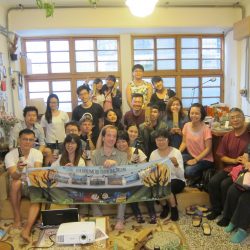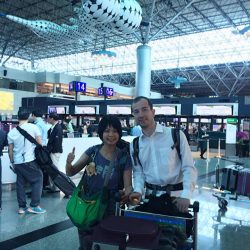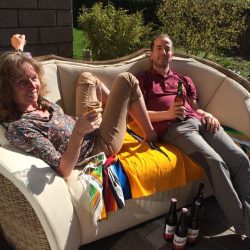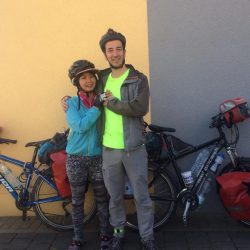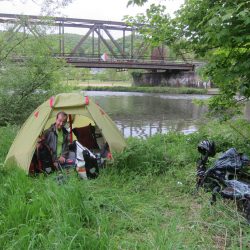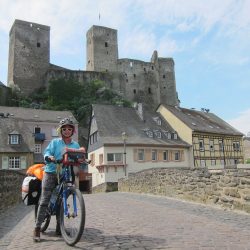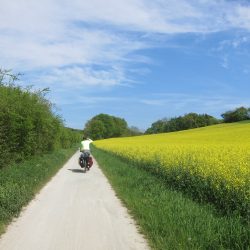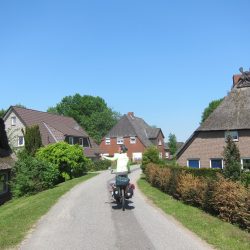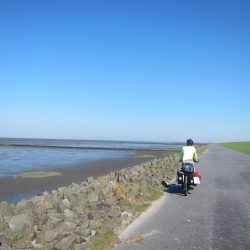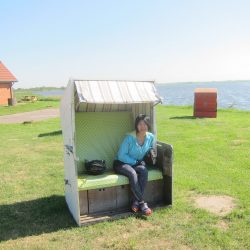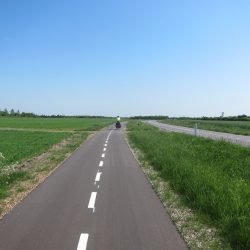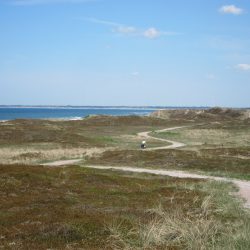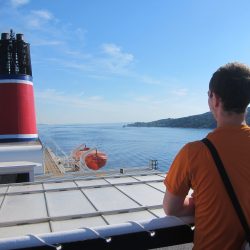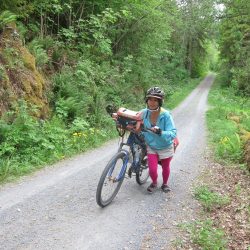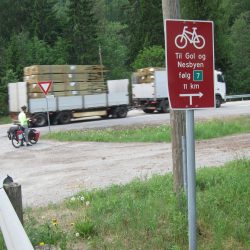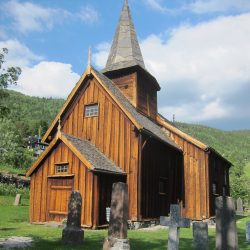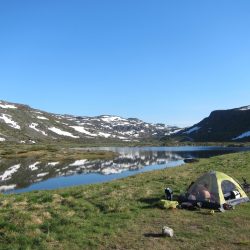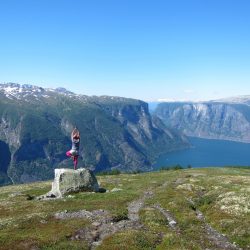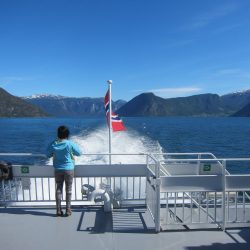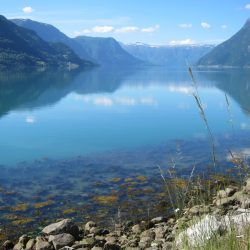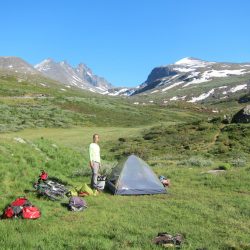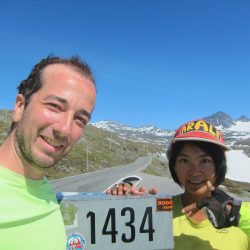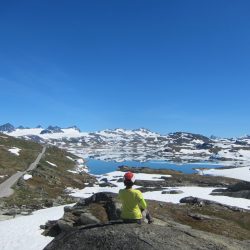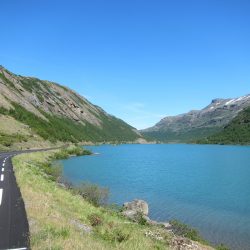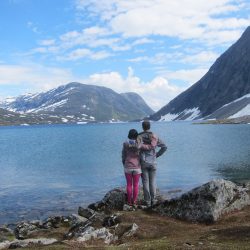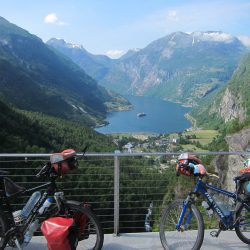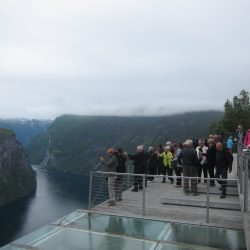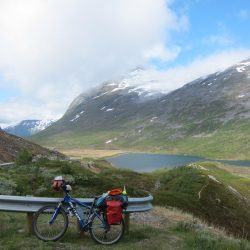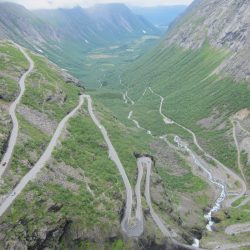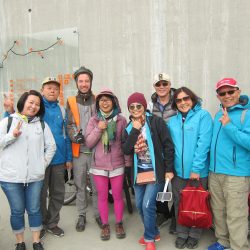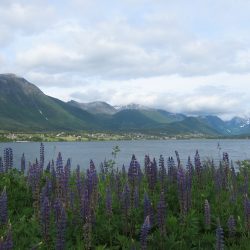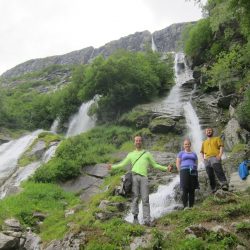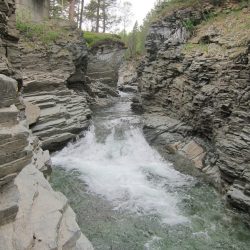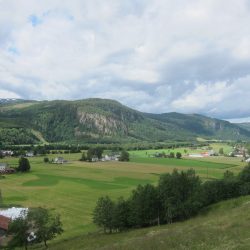After our Irish adventure was over, we had the whole of France to cycle through in October 2017, but I will not go into detail about that in a desperate attempt to catch up. What I can tell about it is that we enjoyed it, met many hospitable French people and managed to just about make it back home before the real winter kicked in. It was good like that as the day we arrived back in Trier it started pouring with rain nearly every day with temperatures just above freezing and we were happy to spend the winter off our bikes.
Winter break
We spent a grand time of doing nothing, spending most of November and December relaxing inside my mother’s home, watching movies and reading, enjoying Christmas when it came up. Back in Ireland we had booked a flight back to Taiwan (legendarily cheap for EUR400 return) for January and stayed there until April. It became necessary for completing our marriage paperwork (which can be another huge post) and interrupting Yuily’s Schengen Area stay for another three months. It was great anyway as we could see many friends again, hold speeches about our trip and enjoy a much warmer climate than Europe had at the time.
The time finally came to continue our adventure. Northern Europe was calling us and we knew we wanted to go to Norway. I knew I had important family matters to attend to at the end of August, and it was causing a little bit of a planning headache as the distances were a little further than imagined and there were no low-cost airlines servicing the region. Besides, the idea of a deadline to catch a flight would stress me immensely and I threw together a different plan for getting back: We would cycle north through Norway as far as we can, then in the beginning of August turn into Sweden and hitchhike as much as possible to get south to a ferry to Germany and take a train back home. I was very contempt with that, as it left us with no bookings of having to be somewhere at a certain time.
- After a speech
- Flying to Germany
- Back home
- Leaving
Northern Germany
On April 27, we then set off again. From Trier, we had the whole north of Germany ahead of us, and my mother was wondering why we didn’t take a train to the Danish border to save some time. But it was important to me to start cycling from home: The whole journey feels more epic that way. And more importantly, the last time we went from the Austrian border to Trier, we had the impression that Germany was very boring. I wanted to change my own mind about that, so I planned a very scenic route, stringing together many local cycle routes, that would take us through river valleys and national parks.
And it was very much worth it. We cycled along the Mosel, Lahn, Eder, Fulda and Leine rivers, almost always on cycle paths and low traffic roads, passing by impressive landscapes, picturesque castles and historic old towns. Germany is a beautiful country after all, evidenced by the many many cyclists we met on the road. Many people were very kind to us as well, be it warmshowers hosts, friends I organized to stay with or just random people we met. We tied maps of our previous and planned route on our bikes and they drew quite a bit of attention as many people came to talk to us or just lifted their thumb and said “respect”. Kindness only seemed to increase as we went north, and we loved the northern state of Schleswig-Holstein for its excellent cycle paths, flat geography, great scenery and, most of all, very friendly people. It’s also one of the few states in Germany which allows wild camping.
- Cochem on the Moselle
- Camping on the Lahn
- Castles abound
- Spring colours
- North German village
- Visiting friends in Hamburg
- Along the North Sea
- Box chair
Denmark
Denmark was then waiting for us and we were excited, as it is probably the country with the second best cycling infrastructure after the Netherlands. Unlike other northern countries, wild camping is not legal in Denmark, but they have something even better: Numerous free campsites across the country, many of them with simple wooden shelters to sleep in. The density of those was high enough that we had multiple choices at the end of the day and just had to navigate there. Often we had them to ourselves, but sometimes we would share the space with other people enjoying the outdoors and we would have nice chats and share food together.
The weather was truly excellent as it only rained twice since leaving home and often we rode in brilliant sunshine roasting our skin. The Danish cycling route 1 was showing us the way, only sometimes sending us on rough gravel and once even directly on the beach. Slow going, but an experience for sure. In the last few minutes before they were gone, I also managed to book tickets for the ferry going from Frederikshavn to Oslo for EUR17. Legendarily cheap considering it’s a 9 hour ride. We boarded it with excitement on May 27, exactly one month after we left home, much faster than expected, bound for the country which was the centerpiece of this trip.
- Good cycling paths
- North Sea
- A shelter to stay in
- Bound for Norway
Southern Norway: Fjords and high plateaus
After a few days of further adjustments in Oslo, and coming to terms with the high food prices, we went westwards. Most of what we cycled in Germany and Denmark was flat, so it was a shock to the system to be thrown into a steep climb out of Oslo. Amazingly, the temperatures were even higher than in Denmark, reaching 30°C almost every day. It made us sweat like fountains on every uphill and use up our sunscreen faster than expected. The upside was that after camping near a river or lake we could go for a refreshing swim and wash in the evening.
We picked up a cycling route soon, which made us happy as surely it would avoid the big roads… Not! Cycling route 4 repeatedly sent us directly on highway 7, one of the main Oslo-Bergen fares, very busy with no shoulder. It didn’t help that some Norwegian drivers were very impatient and passed us with little space. Luckily, once we escaped on highway 50, the road was much quieter. Originally I wanted to cycle a railway service road called Rallarvegen, 130 km of rough gravel over the central plateau, but after being told about snow still blocking many stretches we had to choose highway 50 instead, parallel a few kilometres to the north with the same amazing scenery of the plateau.
- Out of Oslo
- Good for a swim
- No good cycling route
- Stave church
- Frozen lake on the plateau
- Awesome camp
- Songnafjord
- Hiking up
The plateau came to an abrupt end as the road dropped 1000 m in a few km to Aurland on the massive Songnafjord system. This natural miracle is the second longest fjord in the world, the sea stretching hundreds of kilometers inland and cutting the high plateau in half. 1500 m high mountains tower over the ocean inlets, making the scenery world-famous. Camping next to it and hiking up to get a view were unforgettable experiences.
We had to find a way to cross the fjord from Aurland though – the road was a dead end for us as the tunnels which the cars can take don’t allow bicycles and older ferries have been cancelled in favour of these tunnels. It was a planning headache and only a few days before I found that it was possible to book a tourist cruise to take us part of its way. Expensive, but it worked, and we found ourselves in Leikanger on the north side of the fjord system.
More spectacular scenery followed as we cruised along the northern edge of the fjord from which the road then went steeply up 1400 m, back up to the high plateau. Even on there the daytime temperature was as high as 20°C as the Norwegian heat wave continued, while snow and ice was still everywhere. This highway 55, the highest public road in Norway, was surrounded by some of the highest peaks in the country, and thus most of the traffic on it were other tourists, who frequently cheered us on for making it up to the pass.
- Crossing the fjord
- Going north
- Mirror lake 高山湖
- Camping on the plateau
- The pass
- Mirror lake
- Beautiful Norway
- Going down
Tourist Norway and Taiwanese generosity
We cruised down on a thrilling downhill to the crossroads in Lom, where we decided to go west again to be tourists and visit Geiranger, Norway’s most famous fjord. Once again the road rose slowly to 1000 m just 15 km away from the fjord, only to drop rapidly on an exciting downhill to the town. It was lucky then that we got to see everything on the last day of the heat wave, as the next day a grey cloud cover hung over the fjord with much cooler temperatures. It was great while it lasted.
- Up again
- Geiranger
- Geiranger fjord
- How it actually looked
No less than three cruise ships were anchored in the fjord, from which a constant stream of tour buses took the passengers up the Eagle Road, which we were cycling up now. The subsequent viewpoint was very crowded and many of the passengers took great interest in our bicycles and some left donations, very appreciated. More down and up followed, as the Trollstigen pass was next. It was a complete tourist trap with cafe, gift shop and viewing platforms on top of the cliff.
Back in Geiranger we already met some Taiwanese tourists who insisted on giving us some donations, but here at Trollstigen we saw a whole tour bus of Taiwanese unload. They noticed us and started asking many many questions for a long time, and then left us with many Taiwanese snacks and an overwhelming amount of donations. Thanks to them we were able to afford further traveling!
- Up again
- Trollstigen
- Generous Taiwanese!
- Fjords
Down from the steep pass (which I thought was scary to cycle) we made it to Martin’s place who agreed to host us through couchsurfing. It was great as his house had a great view of the fjord, he straight away invited us to barbecue and, best of all for me, brewed lots of beer which he enjoyed sharing. Alcoholic beverages in Norway cost a small fortune (an average can of beer goes for about EUR4 in a supermarket), so lots of people brew their own.
From here, we made our way to Trondheim in a few days, during which it got noticeably colder and rainier. Trondheim was an important intermediate stage for me, as it separates southern and northern Norway – the country gets much more narrow from here on and there are only two roads going north: The main E6 highway, carrying most of the traffic and going far inland, away from the fjords, and the Kystryksveien, a route staying on the coast, requiring a lot of little ferries. These ferries are not very expensive, but add up as there are over 10 of them. It was going to cost us more than EUR100 added all together, but I definitely still favoured that over the busy E6. So, after staying almost a week in Trondheim, thanks to generous hosts, we made our way to the first of many ferries…
- Near Sunndalsora
- Into the mountains
- Small river
- Near Trondheim
Previous: Ireland
